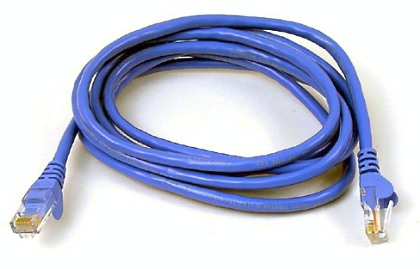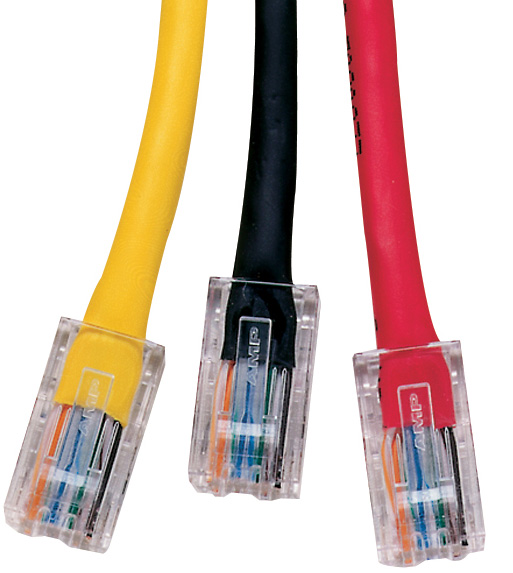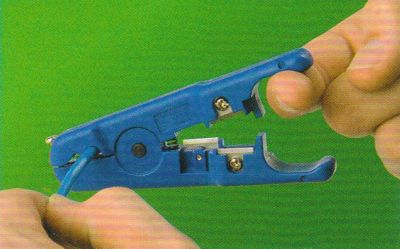Featured Contents
Introduction of ICT
 ICT is the technology required for information processing, in particular,
the use of electronic computers, communication devices and software applications to convert,
store, protect, process, transmit and retrieve information from anywhere, anytime.. [...]
ICT is the technology required for information processing, in particular,
the use of electronic computers, communication devices and software applications to convert,
store, protect, process, transmit and retrieve information from anywhere, anytime.. [...]
Computer System
 A computer system is defined as combination of components designed
to process data and store files.A computer system consists of four
major hardware components; input devices, output devices, processor and storage devices.. [...]
A computer system is defined as combination of components designed
to process data and store files.A computer system consists of four
major hardware components; input devices, output devices, processor and storage devices.. [...]
Computer Network
 A computer network is a system of interconnected computers and peripheral devices. In a network, computers can exchange and share information and resources.. [...]
A computer network is a system of interconnected computers and peripheral devices. In a network, computers can exchange and share information and resources.. [...]
Latest Posts
0
CPU
ict
Rabu, 20 Julai 2011
CENTRAL PROCESSING UNIT (CPU)
Cpu
View more presentations from rozanadiana
CENTRAL PROCESSING UNIT
Like human beings, computers too have a ‘brain’ that processes raw information into usable data. Users input data into the computer system and it is then processed by the central processing unit or the CPU. The results of the processed data are then sent to an output device as usable data.
THE CENTRAL PROCESSING UNIT (CPU)
A Central Processing Unit or CPU is a microprocessor
(or processor for short). It is an integrated circuit chip
that is capable of processing electronic signals. The CPU
is the most important element in a computer system.
A CPU interprets instructions given by the software and carries out those instructions by processing data and controlling the rest of the computer’s components.
Nowadays, processors are found in all kinds of electronic devices such as cell phones, calculators, automobile engines, and even industrial and medical equipment. They process information so that humans can enjoy their
effective and efficient operation.
A CPU consists of two subcomponents; the Control Unit (CU) and the Arithmetic Logic Unit (ALU).
1) CONTROL UNIT (CU)
Basically the Control Unit’s main function is to direct the
CPU to process data. The Control Unit extracts instructions from memory and decodes and executes them.
FETCH
Retrieves the next program instruction from the computer’s memory.
DECODE
Determines what the program is telling the computer to do.
STORE
Stores the results to an internal register (a temporary storage location or to memory).
EXECUTE
Performs the requested instruction, such as adding two numbers or deciding which one of them is larger.
2) ARITHMETIC LOGIC UNIT (ALU)
The Arithmetic Logic Unit (ALU), as its name implies,
can perform all arithmetic and logical operations. Arithmetic operation is an operation that forms a
function of two numbers. This function is usually one of the class of operations: add, subtract, multiply and
divide.
Logic operation is an operation on logical values, producing a Boolean result.
In general there are 16 logic operations over one or two operands; they include AND, OR, NOT, NAND, NOR, XOR and equivalence.
HOW DATA IS PROCESSED BY THE CPU
When a user starts a program, its instructions are transferred from the storage device to the memory. The user enters the data needed by the program.
The Control Unit then interprets and executes instructions in the memory. The Arithmetic Logic Unit then performs calculations on the data in the memory. As a result, information is then stored in the memory. Information can then be sent to an output device or a storage device.
0
CRIMPING STRAIGHT CABLE
A network cable acts as an extension enabling a device with a Network Interface Card to be attached to a network. A common form of network media is the UTP CAT 5 known as Unshielded Twisted-Pair Category 5 cable.
CAT 5 cable has four twisted pairs of wire for a total of eight individually insulated wires.
Each pair is colour coded with one wire having a solid colour:
Blue , Orange, Green, Brown
The straight cable is terminated with CAT 5 RJ-45 (Jack) modular plug (RJ means Registered Jack).RJ-45 plug are similar to those you'll see on the end of your telephone cable except they have eight contacts on the end of the plug and they are about twice as big.
Crimp tool - to crimp RJ-45 connectors.
Cable stripper – to cut and strip cables.
CUTTERS
Cutters - to cut the cable off at the reel and to fine tune the cable ends during assembly.
This cable can be used to directly connect two computers to each other without the use of a hub or switch.
TOOLS FOR CABLE CRIMPING
What you need are some tools such as a cable, connectors, crimper, stripper and cutter. Be sure the cable you are using is properly rated for CAT 5.
Crossover cables are terminated with CAT 5 RJ-45.
STRIPPING CATEGORY 5 CABLE
Start by stripping off about two inches (5cm) of the plastic jacket off the end of the cable.
CATEGORY 5 CABLE
Category 5 cable must only have half of an inch (1.3 cm) at the end.
CUTTING CATEGORY 5 CABLE
Begin to untwist the twisted exposed wires on your cable, be sure to hold onto the base of the jacket with your other hand.
Once you have all the wires untwisted begin to arrange them in the proper order:
White/Green, Green
White/Orange, Blue
White/Blue, Orange
White/Brown, Brown
Once you get all the wired arranged in the proper order, make sure your wire cutters are within reach then grasp at the point where they enter the jacket.
Grab your cutters now. Line them up along your prepared wires about half an inch or 1.3 cm above the jacket.
Be sure at this point that you are both half an inch or 1.3 cm above the jacket, and that your cutters are aligned straight across the wires.
FITTING RJ-45 PLUG
Take RJ-45 plugs and begin to slide the wires into the RJ-45 plugs.
You might face some difficulties at this point, but have some patience and hold onto those wires.
It will fit in there just fine. Once it is in as far as it will go the wires should extend almost to the front of the RJ-45 plugs, and about 3/8 of an inch or 2 cm of the jacket will be inside the RJ-45 plugs.
CRIMPING CATEGORY 5 CABLE
Be sure to keep a good grip on the RJ-45 plug and the cable.
Insert the RJ-45 plug into the crimper.
It should only go in one way, so you don't have to worry about inserting it.
Begin to compress those crimpers.
You will hear a clicking sound. Keep squeezing.
If you try to let go too early, nothing will happen. They will not release.
Keep compressing until they stop clicking or stop moving all together.
At this point, you should be able to let go of the RJ-45 plug and the crimpers.
EXAMINING THE CRIMPED CATEGORY 5 CABLE
If you look at the end of the RJ-45 plug, you should see that the copper connectors should not be pressed down into the wires.
Toward the back of the RJ-45 plug it should be crimped securely holding the jacket or cable in the RJ-45 plug.
pc
ict
Khamis, 14 Julai 2011
CRIMPING CABLE
CRIMPING STRAIGHT CABLE
A network cable acts as an extension enabling a device with a Network Interface Card to be attached to a network. A common form of network media is the UTP CAT 5 known as Unshielded Twisted-Pair Category 5 cable.
ITEMS FOR MAKING STRAIGHT CABLE
CAT 5 CABLE
CAT 5 cable has four twisted pairs of wire for a total of eight individually insulated wires.
Each pair is colour coded with one wire having a solid colour:
Blue , Orange, Green, Brown
RJ-45
The straight cable is terminated with CAT 5 RJ-45 (Jack) modular plug (RJ means Registered Jack).RJ-45 plug are similar to those you'll see on the end of your telephone cable except they have eight contacts on the end of the plug and they are about twice as big.
CRIMP TOOL
Crimp tool - to crimp RJ-45 connectors.
CABLE STRIPPER
Cable stripper – to cut and strip cables.
CUTTERS
Cutters - to cut the cable off at the reel and to fine tune the cable ends during assembly.
CABLE CRIMPING PROCESS
- The total length of wire segments between a PC and a hub or between two PCs cannot exceed 100 Meters.
- Strip one end of the cable with the stripper or a cutter.
- If you are using the stripper, place the cable in the groove on the blade (left) side of the stripper and align the end of the cable with the right side of the stripper.
- Spread and arrange the pairs roughly:
White/Green, Blue
White/Blue, Green
White/Brown, Brown
White/Orange, Orange
- Trim the ends of the wires so they are even with one another.
- It is very important that the unstripped or untwisted end be slightly less than half-inch long.
- If it is longer than half-inch it will be out of its specifications and will cause crosstalk.
- If it is slightly less than half-inch long, it will not be properly clinched when RJ-45 plug is crimped on.
- There should be little or no space between the wires.
- Hold the RJ-45 plug with the clip facing down or away from you.
- Push the wire firmly into the plug.
- Looking through the bottom of the plug, the wire on the far left side will have a white background
- The wires should all end evenly at the front of the plug.
- Hold the wire near the RJ-45 plug with the clip down and firmly push it into the front-left of the crimper.
- Hold the wire in place and squeeze the crimper handles quite firmly.
- Crimp it once.
- Finally test the crimping result.
- Test the crimp strength.
- If it is done properly, an average person will not be able to pull the plug off the cable with his or her bare hands.
CRIMPING CROSSOVER CABLE
This cable can be used to directly connect two computers to each other without the use of a hub or switch.
TOOLS FOR CABLE CRIMPING
What you need are some tools such as a cable, connectors, crimper, stripper and cutter. Be sure the cable you are using is properly rated for CAT 5.
Crossover cables are terminated with CAT 5 RJ-45.
STRIPPING CATEGORY 5 CABLE
Start by stripping off about two inches (5cm) of the plastic jacket off the end of the cable.
CATEGORY 5 CABLE
Category 5 cable must only have half of an inch (1.3 cm) at the end.
CUTTING CATEGORY 5 CABLE
Begin to untwist the twisted exposed wires on your cable, be sure to hold onto the base of the jacket with your other hand.
Once you have all the wires untwisted begin to arrange them in the proper order:
White/Green, Green
White/Orange, Blue
White/Blue, Orange
White/Brown, Brown
Once you get all the wired arranged in the proper order, make sure your wire cutters are within reach then grasp at the point where they enter the jacket.
Grab your cutters now. Line them up along your prepared wires about half an inch or 1.3 cm above the jacket.
Be sure at this point that you are both half an inch or 1.3 cm above the jacket, and that your cutters are aligned straight across the wires.
FITTING RJ-45 PLUG
Take RJ-45 plugs and begin to slide the wires into the RJ-45 plugs.
You might face some difficulties at this point, but have some patience and hold onto those wires.
It will fit in there just fine. Once it is in as far as it will go the wires should extend almost to the front of the RJ-45 plugs, and about 3/8 of an inch or 2 cm of the jacket will be inside the RJ-45 plugs.
CRIMPING CATEGORY 5 CABLE
Be sure to keep a good grip on the RJ-45 plug and the cable.
Insert the RJ-45 plug into the crimper.
It should only go in one way, so you don't have to worry about inserting it.
Begin to compress those crimpers.
You will hear a clicking sound. Keep squeezing.
If you try to let go too early, nothing will happen. They will not release.
Keep compressing until they stop clicking or stop moving all together.
At this point, you should be able to let go of the RJ-45 plug and the crimpers.
EXAMINING THE CRIMPED CATEGORY 5 CABLE
If you look at the end of the RJ-45 plug, you should see that the copper connectors should not be pressed down into the wires.
Toward the back of the RJ-45 plug it should be crimped securely holding the jacket or cable in the RJ-45 plug.
0
Place the CPU into the ZIF socket. Make sure pin number one is placed correctly.
Lock the socket using the locking lever.
Apply the IC paste at the bottom of the heat sink.
Fix the processor fan on the processor.
Set the jumper on the CD-ROM drive as Master.
Attach the drive to the trails on the casing.
Screw the drive securely on both sides.
Plug in the IDE cable and power cable.
Attach the video and audio cards onto the slots.
Attach the IDE cables for hard-disk, CD-ROM and floppy drive on the motherboard.
Attach the power cables for the motherboard.
Attach power cables for front panel display that is to the speaker, HDD indicator LED, Power LED and RESET button.
Attach the drive to the casing.
Screw the drive securely on both sides.
Plug the power cable.
Connect the IDE cable.
Set the jumper to master. If this is your second hard disk, set the jumper to slave.
Secure the hard disk on both sides.
Attach the master or slave connection of the IDE cable to the hard disk.
Connect the power cable.
Replace the casing and screw it tightly and finally set it in an upright position.
Plug in the video cable from the monitor to the display card.
Connect the keyboard, speakers and mouse to the respective ports.
Plug in the power cord and switch on the power.
Press the power button.
cable
ict
PC ASSEMBLING
FIXING THE PROCESSOR
Place the CPU into the ZIF socket. Make sure pin number one is placed correctly.
Lock the socket using the locking lever.
Apply the IC paste at the bottom of the heat sink.
Fix the processor fan on the processor.
INSTALLING THE RAM
Insert the RAM in the RAM slot and press downwards. Ensure that the RAM remains in the locked position. You will hear a 'click' sound when the RAM is locked in place.INSTALLING THE POWER SUPPLY
Attach the power supply to the motherboard. You must ensure all connections are firmly attached and no wires run near the top of the processor fan.INSTALLING THE OPTICAL DRIVE (DVD OR CD)
Set the jumper on the CD-ROM drive as Master.
Attach the drive to the trails on the casing.
Screw the drive securely on both sides.
Plug in the IDE cable and power cable.
ATTACHING THE VIDEO CARD & CONNECTING THE CABLES
Attach the video and audio cards onto the slots.
Attach the IDE cables for hard-disk, CD-ROM and floppy drive on the motherboard.
Attach the power cables for the motherboard.
Attach power cables for front panel display that is to the speaker, HDD indicator LED, Power LED and RESET button.
INSTALLING THE FLOPPY DRIVE
Attach the drive to the casing.
Screw the drive securely on both sides.
Plug the power cable.
Connect the IDE cable.
INSTALLING THE HARD DISK
Set the jumper to master. If this is your second hard disk, set the jumper to slave.
Secure the hard disk on both sides.
Attach the master or slave connection of the IDE cable to the hard disk.
Connect the power cable.
CONNECTING OTHER PERIPHERALS
Replace the casing and screw it tightly and finally set it in an upright position.
Plug in the video cable from the monitor to the display card.
Connect the keyboard, speakers and mouse to the respective ports.
POWERING THE SYSTEM
Plug in the power cord and switch on the power.
Press the power button.
0
karnival
ict
karnival ict
LIST OF WINNER...
Congrats! for the winner in Karnival ICT. It so fun....and thank Q for all cooperation...
Here the list of winner
PHOTOSHOP DRAWING
VIGNISWARA KAUNDAR A/L RAJANPRAN (JOHAN-UPPER FORM)
AHMAD MUSLIM B. AHMAD AZMI (SAGUHATI - UPPER FORM)
MOHD SYAFIQ BIN SAIFUL BHARI (JOHAN-LOWER FORM)
MUHD QAYYUM IMAN AHMAF HAMDANI (NAIB JOHAN-LOWER FORM)
Langgan:
Catatan (Atom)
my slide
My controversiol control
View more presentations from rozanadiana.
menu
clock
GUEST
ICT TERMS
blog akademik
pemenang karnival ict
chat
chat
pages
Followers
Search This Blog
scorea-ict. Dikuasakan oleh Blogger.






















